The chill of Winter finally begins to subside. After months of gray skies, sunlight slowly begins to warm the earth. Your heart warms too, because the bulbs you planted last Fall are just starting to emerge. At least, that’s what ought to happen. And why shouldn’t it? Bulbs are so easy to plant, and so worthwhile when they bloom. What are you waiting for? Get inspired by our favorites and get started by following a few simple steps.
6 Bulbs That Turn Us On
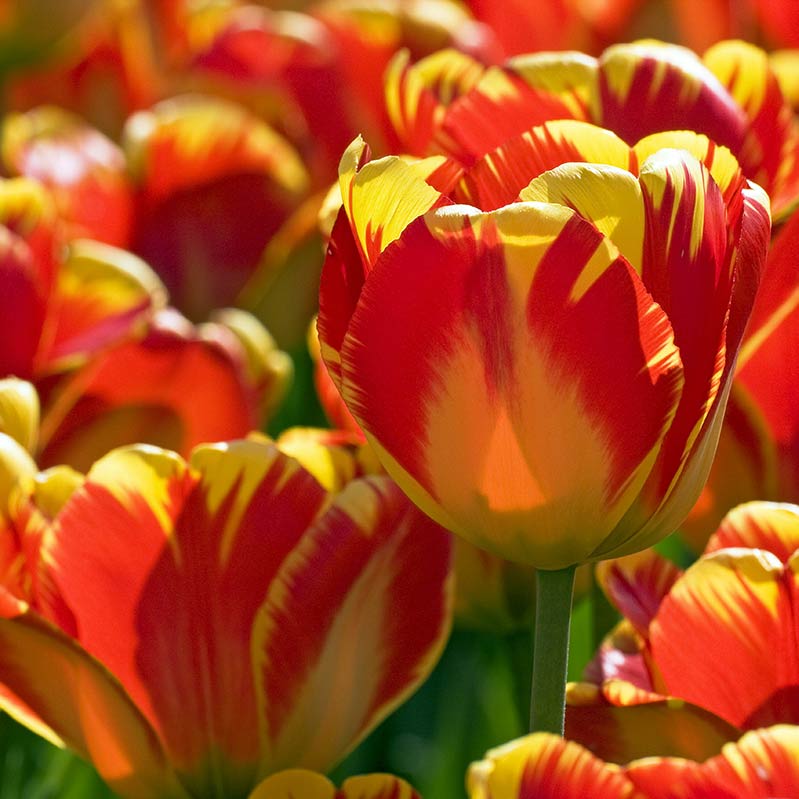
Darwin Hybrid Tulip is a Natural Selection.
It’s a very large tulip with the classic shape that comes to mind when you think of tulips. Most are reddish-orange, but you can also find them in pink, yellow and white.
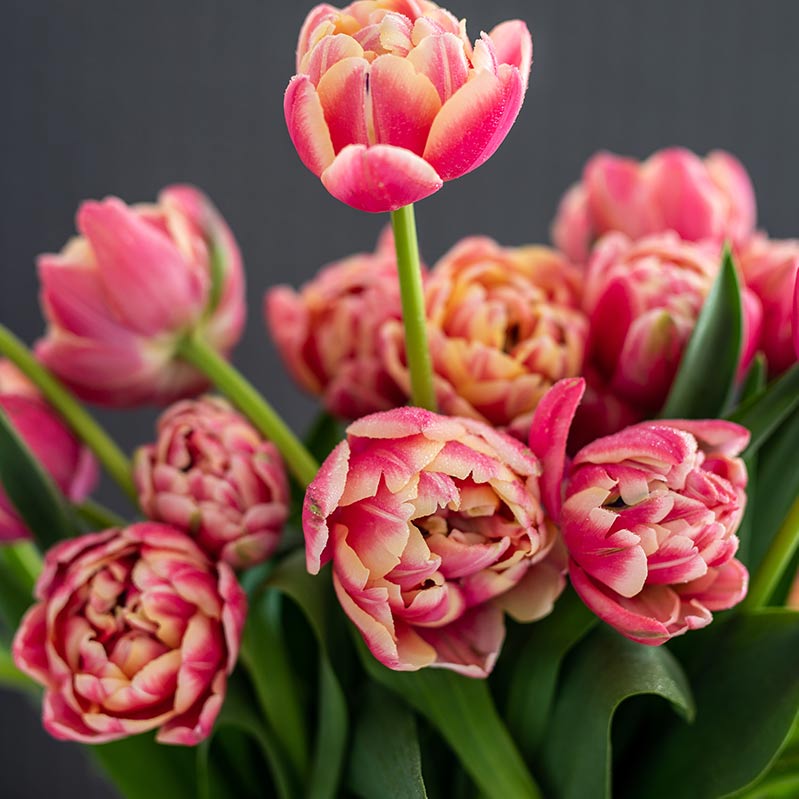
Parrot Tulips are All the Talk.
We just had to mention these. Like the birds, they come in all kinds of beautiful vibrant colors, and their curly, frilly petals wave like feathers in the breeze. Huge blooms hold up well.
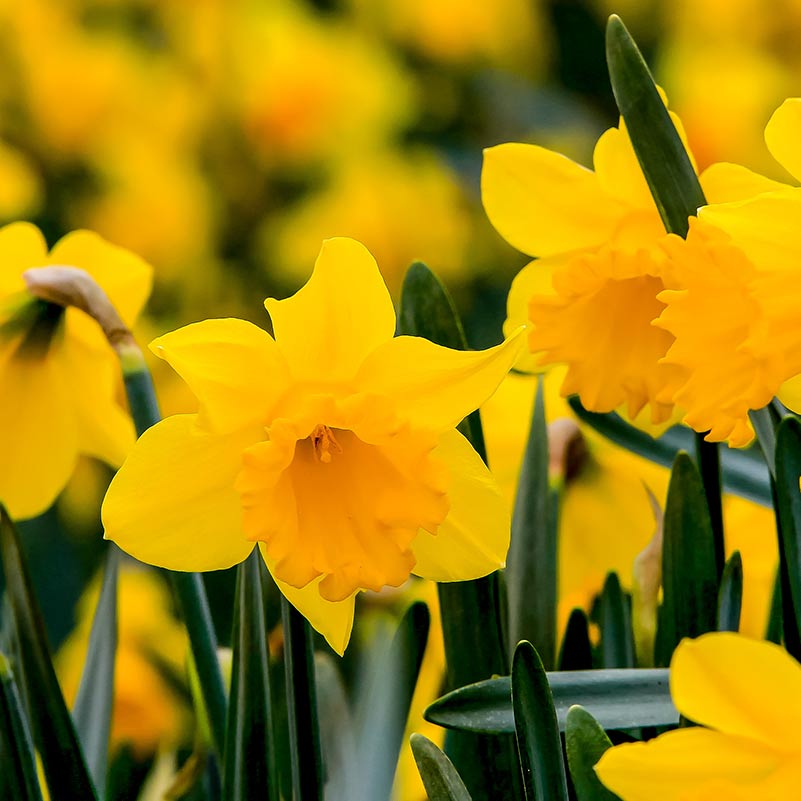
Nothing Daffy About Daffodils.
Nearly everyone loves to see these sunny yellow or white flowers. Daffodils stand up to the cold and are always among the first flowers to send shoots upward in the Spring.
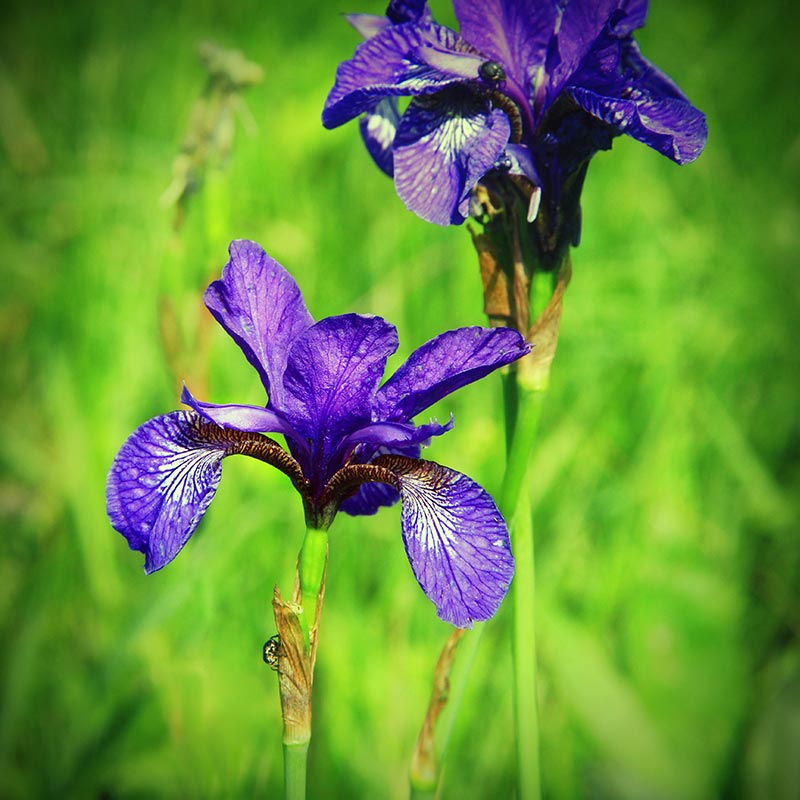
Let’s Go Dutch – Iris, That is
Dutch Irises are a favorite because they are just so dependable. Flower petals luxuriously drape over their sides, and the blooms come in a wide variety of intense colors.
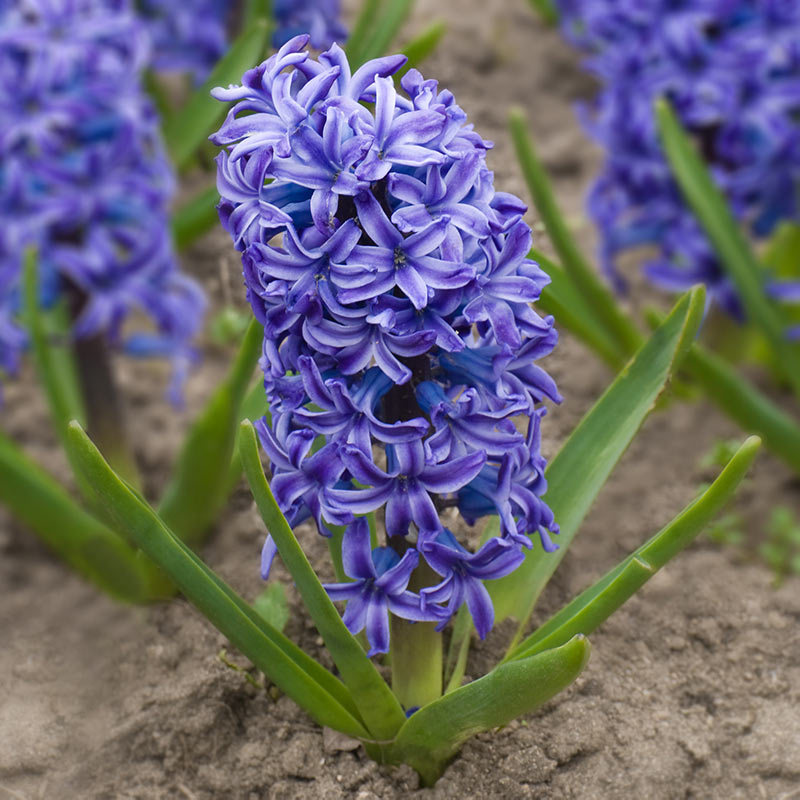
Wow, a New, All-Time Hy–acinth
Sweet fragrance and flower clusters stemming from low plants are character-istics of this perennial spring beauty.
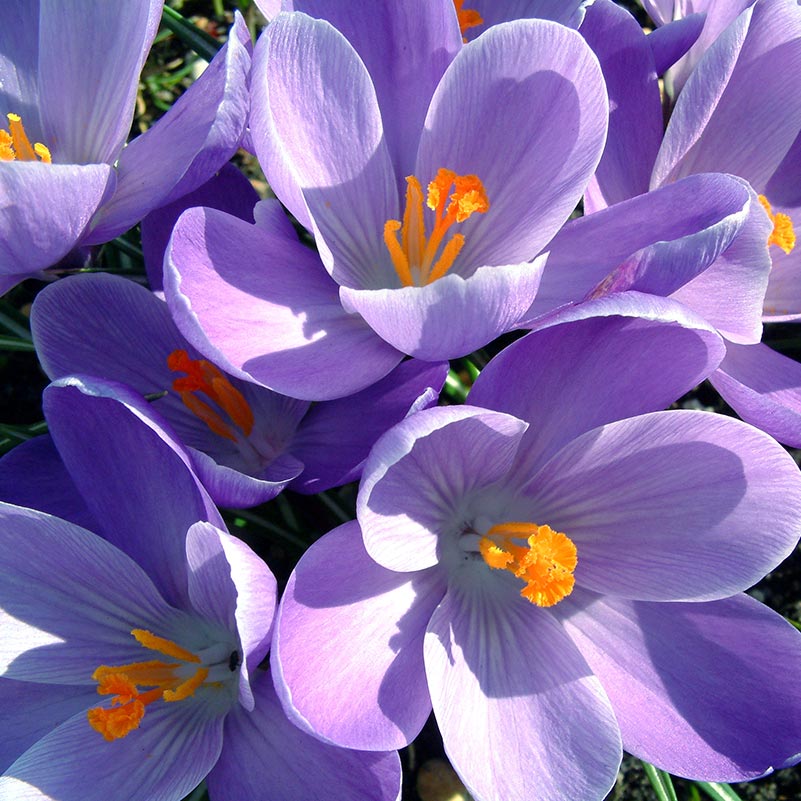
Crocus Pocus.
Almost like magic, these lovely little perennials (2-4 inches tall) are always among the first signs of spring. Crocuses come in many colors – red, orange, pink, purple and more. A side benefit: pesky critters don’t seem to attack them.
7 Steps to Fall Bulb Planting
1. Be Picky. Specifically, about your bulbs and where you’re going to plant them. At your garden center, choose bulbs that are free from obvious physical damage, mold or mildew.
2. Timing Isn’t Everything. But it’s pretty doggoned important. Plant your bulbs when the soil has cooled, but well before the ground freezes. Late September and October are normally just about right.
3. Get in Deep. There are exceptions, but here’s a good rule of thumb: dig a hole about three times deeper than the bulb is tall. So, a 3-inch bulb needs a 9″ hole. Sandy soil? Go slightly deeper. Clay soil, go slightly shallower. Choose a well-drained spot for planting that will get at least six hours of sun each day. Constantly wet, mushy ground is a good way to rot bulbs.
4. Don’t Miss the Point. When you plant bulbs, ALWAYS do so with the point facing up.
5. Get Good Dirt on the Subject. Bulbs like well-aerated, well-drained soil rich in organic matter. If you have poor soil — too sandy or too much clay — add amendments to improve it. Be sure to add 1-1/2 heaping teaspoons of Espoma Bulb-tone® or Bio-tone Starter Plus® into the planting hole with the bulb, where the roots can find it. This rich, organic, slow-feeding plant food is especially formulated to meet the nutritional needs of bulbs. Feed again at the same rate when plants are about six inches high.
6. After Dinner Drink. After covering the bulbs with rich organic soil, water well to help them become established before winter.
7. To Mulch is Enough. Adding a 3-inch layer of mulch over the surface of the soil will help insulate and protect the bulbs against freeze and thaw conditions. If you’re worried about the shoots finding their way through it in the Spring, you can always pull back the mulch in April.
Other Bulbous Tips
- If you have destructive pests like voles and squirrels, you may need to plant bulbs in a cage. Bulb cages may be purchased at garden centers or fashioned by hand with a bit of wire mesh or chicken wire.
- Consider planting bulbs in groups or random order, keeping in mind that some will not sprout. This will create a more natural-looking appearance than a regimented, straight line.
- Consider planting low bulbs in front of high, or layering bulbs to create striking combination arrangements when they bloom.
- Bulbs don’t usually need to be dug up at the end of the first year. After the second year, watch for signs of crowding, like smaller blooms. That’s a signal it’s time to dig bulbs up, dry them out for a few days, divide and replant them.
- For fun, try planting bulbs in containers.
There you have it, a short primer on Fall bulb planting. Give it try. It’s fun, easy and a great excuse to play in the dirt this Autumn. Best of all, after a long Winter you’ll be rewarded with beautiful new growth springing up around you – a very pleasant reminder of why you undertook the effort in the first place.
The post Plant Fall Bulbs to Brighten Your Spring first appeared on Espoma.
from Espoma https://www.espoma.com/gardening-projects/plant-fall-bulbs-to-brighten-your-spring/
from
https://summerblakeley.wordpress.com/2021/07/13/plant-fall-bulbs-to-brighten-your-spring/
No comments:
Post a Comment